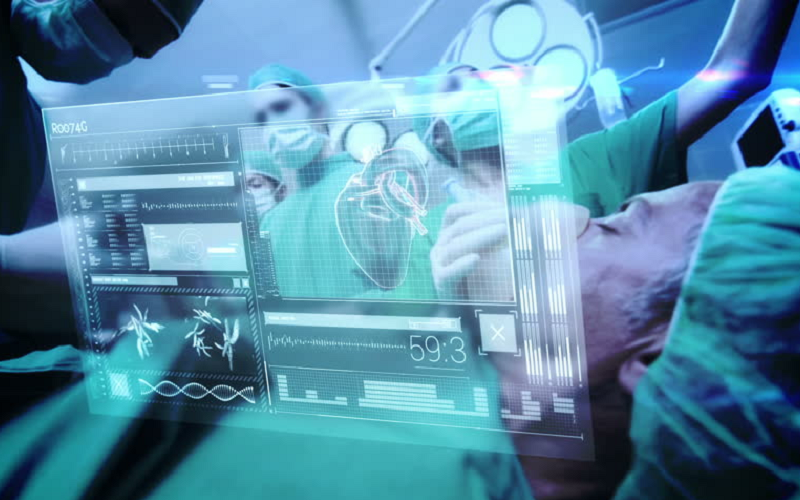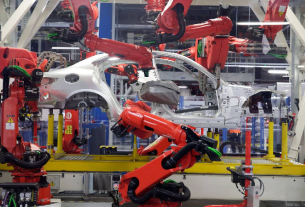Medical technology has come a long way since the invention of eyeglasses and the stethoscope. The broader availability of mobile internet, the expansion of a more affluent middle class, and an aging global population are all driving change in the healthcare industry, and the associated technology is changing faster than ever before.
According to a profile of the healthcare industry by the World Economic Forum, more than half of the medical industry’s workforce is projected to need at least some reskilling in the near future.
Many of the most interesting new technologies in medicine need to be used together, and integrated attempts to do so already exist. Some tech-inspired clinics, such as Forward and One Medical, take a concierge-like approach to primary care, putting technology to use in a way that providers get more quality time with their patients. But that is just the beginning.
You will recognize a lot of the tech on this list because most of the important technologies changing healthcare are the same technologies changing other industries. The difference, though, is in the application, and the genius is in the details.
Augmented Reality & Virtual Reality
Augmented and virtual reality (AR and VR) have several applications in the medical world. Simulated and hybrid environments have found a natural fit in medical education, providing simulation training that enhances and works alongside traditional school. Immersive learning with AR and VR headsets can cater to several different learning styles at once by engaging the full range of senses: audio, visual, and kinesthetic.
VR can be used in physical therapy to help patients recover from complex limb injuries and even has applications in areas like mental trauma where it can alleviate phobias and PTSD through customized exposure and treatment. In the surgical theater, Cambridge Consultants developed AR glasses that let surgeons see the inside of a patient’s body by superimposing data from 3D scans and CAT scans. This provides a revolutionary level of visibility into minimally invasive “keyhole surgeries,” and requires practically no additional training to use.
Based on the low learning curve and relatively low cost of use, further developments should see the medical landscape further merge with augmented and virtual reality.
AI and Machine Learning
Humans and computers are good at different things and need to work in tandem to deliver top quality medical care. Artificial intelligence (AI) and machine learning (ML) are at their best when supplied with vast amounts of raw data, much as one would find flowing in and out of a medical facility. From there, they help physicians and care providers by taking the uncertainty out of image scan analysis, reducing burnout, and giving decision support in non-absolute diagnoses and treatment options.
Algorithms and virtual assistants enable physicians to see more patients a day and use the time with each patient more effectively. AI is increasingly being used in remote monitoring and telehealth applications. Future revolutions in computing power, such as quantum computing, could make it possible to analyze millions of CAT scans (or, with secure sharing infrastructures and pooled datasets, practically every CAT scan in existence). From that could come major revelations for medical science, as detected patterns could be used to treat, prevent, or predict diseases. AI and ML are, like many disruptive technologies, ones that get better with use.
Robotic Surgery
Robotics has been making an impact on medical care since the 1980s, but as the technology behind it has improved, the applications have increased exponentially, notes Entrepreneur. Nanobots in the bloodstream can diagnose and prevent disease. Exoskeletons can assist with physical therapy and counteract movement disabilities. But perhaps the most visible (and multi-armed) application for 2019 is robotic surgery.
Robotic surgery is minimally invasive, more precise, less prone to infection, and quicker to heal. Image-guided robots can now investigate lesions on the brain without damaging any of the surrounding tissue. They can shape a bone to precisely fit a prosthetic with the accuracy a human never could. The da Vinci robotic surgical system is already used in 200,000 operations a year but the onset of superfast 5G connections will soon allow remote surgery, and what once was considered a novelty could quickly become standard practice.
Blockchain
Data breaches cost companies globally on average $3.75 million annually, and the healthcare industry suffers the highest cost per individual breach. Combine that figure with the fact that medical facilities are data goldmines that contain some of the most private and valuable information about an individual, and you have a huge security risk that grows as fast as technology does.

Compounding the problem is the idea that sharing medical data between facilities, and between scientists, could vastly quicken the development of effective treatments, but the propensity to share such data is dampened by the fear of a security breach. The magic bullet for all these concerns, many experts think, is blockchain technology.
Built around a system of currently unhackable cryptography, blockchain tech keeps a distributed ledger of vast amounts of information. This not only securely stores data, but it cuts out the middleman and saves costs for providers and patients alike. Intel states that blockchain can also reduce the possibility of fraud — Medicare fraud alone costs the US about $60 billion a year. One early blockchain system seeking to solve all this is ALLIVE, which consists of an entire healthcare ecosystem, including an encrypted health profile and even an AI doctor. More such systems will be sure to follow.
3D Printing
The first ever 3D-printed object was a piece of low-grade medical technology, an eye-wash cup, and has come a long way since. Medical devices can now be perfectly matched to the exact specifications of a patient, and be compatible with their natural anatomy. A patient’s body is more likely to accept implants, prosthetics, and devices when they’re perfectly aligned and customized, and the patient often expresses greater comfort and improved performance outcomes as a result.
The most significant developments in 3D printing have come in external prosthetics, cranial or orthopedic implants, and custom airway stents. But it has also proven helpful in surgical planning and has been used in complex open heart surgeries, and even Cleveland Clinic’s total face transplant. Talks of printing human tissue have suggested that organ transplants may one day be obsolete.
Telehealth
Advances in video conferencing technology, combined with the expansion of mobile internet and the proliferation of wearable devices, have made telehealth is one of the most important trends in medical technology in 2019. Utilizing a mobile device and a two-way camera, care providers can have one-on-one encounters with patients from a distance. These patients are usually either in rural areas or unable to secure transportation to a physical facility.
Health monitors such as wearable devices can check for heart rate, blood pressure, and blood oxygenation. Web-enabled and app-enabled supplements can filter patient requests accordingly and save both providers and patients critical time and energy. Even the most routine telehealth visits can save lives. They reduce barriers to care such as transportation, language, and geography.
For older people living alone, regular checkups can help avoid strokes, heart attacks, and other adverse events, and, logistically, there is less risk of exposure to other diseases. As the technology improves and incorporates augmented and virtual reality, usage could graduate from simple virtual check-ups to a whole fleet of medical procedures performed remotely, even including, with the aid of robotics, full-fledged surgical operations.
Cancer Immunotherapy
Immunotherapy is changing definitions in the medical world, primarily by curing previously uncurable diseases. The premise of immunotherapy is to genetically alter a patient’s cells to work in tandem with the body’s immune system to fight cancer. Unlike chemotherapy, immunotherapy does not destroy healthy cells as collateral damage. By altering the immune system, one can “teach” it to detect and destroy more cancerous cells and reduce tumor growth.
A promising area of medicine for almost a decade, immunotherapy continues to highlight new immunotherapeutic targets and biomarkers. New treatments in combination with joint therapy and engineered T-cells can create what will ideally be effective therapies for a wide range of tumor profiles.
Personalized Medicine
If there is one overarching trend to all the advances in medical technology, it is the personalization of medicine and treating individuals as such. While this is occurring at several levels, it is most readily apparent in biotechnology and pharmacology. Personalization can also be implemented to treatments based on differences in people’s physiology, such as different skin types.
One area of application is pharmacogenomics, which is seeing rapid development as a possible method of abating the opiate crisis in America. Scientists and doctors can study an individual’s likely responses to drugs and doses and select personalized regimens accordingly so that they avoid some of the dangerous side effects of over-prescribing a scheduled drug.
The second application is in RNA-based therapeutics, which seeks to “interfere” with genetic data at the RNA level and intercept a genetic abnormality before it gets translated into functioning (or non-functioning) proteins. The more successful methods of personalized RNA therapy (e.g., antisense nucleotides and RNA interference) are looking to combat rare genetic conditions such as Huntington’s Disease, neurologic disorders, and forms of cancer.


